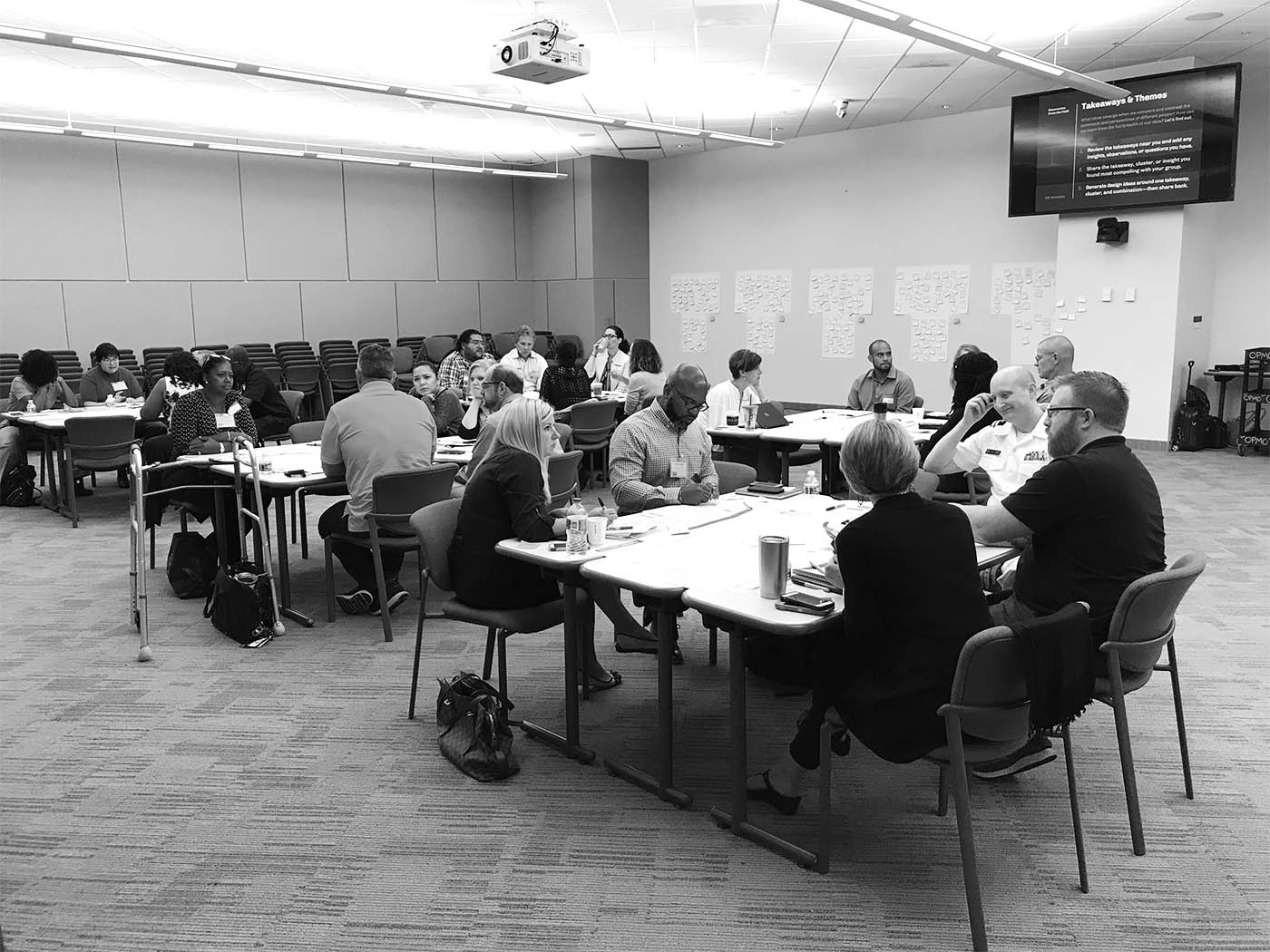On Teamwork
Building good teams is a strategic mission

Photo from one of the CDC's Veteran Suicide Prevention project workshops.
To work effectively in complex spaces, teams must lean into that complexity themselves. And since complex problems, characterized by the intersection of systems and innate interdependencies, do not easily divide into neat segments, 1 teams themselves and the process of working in teams cannot hope to scale them with a simple division of labor.
To take a step back, consider the following anecdote: One day in our practice space, the lead guitarist in the band I was in at the time looked over at me and said “Remember, it’s supposed to be fun”. I had been struggling to construct the the melody line for a song for what seemed like several hours, and I was clearly getting frustrated and tired. I re-centered on that statement, and we continued. With the help of my bandmates, the song came together.
This story encapsulates the design process to me: a collection of specialists, 2 iterating through a problem together, towards a common goal. That common goal is not a fully-formed, defined solution, but is, instead, framed as a best solution given the project needs and constraints, 3 and the specialists are there to both execute their specialty (in the case of the band, this was playing the drummers, bass, guitar, etc) but to also support the development of the other specialties.
This is the ideal. Of course, the ideal is rarely possible, but it is a goal to shoot for. For this reason, bifurcation between research- or strategy-oriented designers and technical- or making- based designers confounds me. In many design teams in orgs of all sizes, there seems to be a reality (if not an outright stated division) between the “design research/strategy” people, who do research analyze it, and package it into reports, and the “technical designers” who conceive of and create the answers to questions and needs the research revealed. Beyond that, few if any designers are usually included in implementation or measurement teams, excluding them from the very feedback that would improve research and design. But, as in music groups, this division seems all wrong. Although each person has a specialty, the team should work in concert, albeit not always at the same pace or with the same degree of focus, as the others.
In practice this means knitting together the specialties across the entirety of a project so that teams can learn the realities of the different phases. This, in turn, drives the future efficiency of teams as individuals learn the squishy boundaries of each speciality and phase by iterating through it together.
If this seems hard, that’s because it is, but in the long term it’s also more efficient and cheaper than a divided process. Teammates learn to work together towards the common overall goal and true interdisciplinary work comes to fruition. This is all in an effort to better scale the complex problems 21st century design teams face. The old-style waterfall or factory-floor division of labor won’t work; they rarely apply to the demands of team’s problem space. Complexity demands smarter work, and smarter work requires the integration of specialities, not their separation.
- Read more on this in On Complexity.
- See Design Management and What Do Designers Do?
- For more on this, see On Complexity